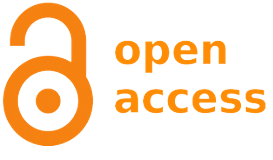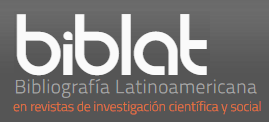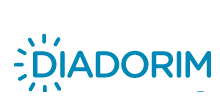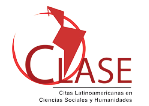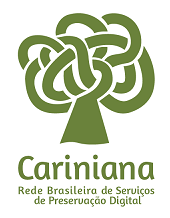Chevrolet and female audiences: hybridization in advertising
DOI:
https://doi.org/10.5433/1519-5392.2013v13n1p171Keywords:
Hybridization, Argumentativeness, AdvertisingAbstract
This paper performs a study on the hybridization found when the gender advertising is coated in the gender reporting. Confirming the persuasive-ideological character of advertising, we find in this language, a vast field of study for the argument, primarily when we identify the appropriation of a genre with its specific language, its characteristics, its arrangements, in another one. The methodological procedure incorporates macro and microanalysis guidance listed by Bonini (2003) to the study of argumentativeness expressed by words with which it conveys the ideology responsible for the spread of values accepted by a given community. Thus, we have proved the assertion of French linguist Oswald Ducrot, whereby the argumentativeness is inscribed in its own language, depending mainly on the text used by the producer and for what purpose he uses it to prioritize interaction.Downloads
References
BAKHTIN, Mikhail Volochinov. Marxismo e filosofia da linguagem. Trad. Michel Lahud e Yara F. Vieira. São Paulo: Hucitec, 2003.
BAUMGÄRTNER, Carmem Terezinha; COSTA-HÃœBES, Terezinha da. Revisitando alguns conceitos teóricos. In: BAUMGÄRTNER, Carmem Teresinha; COSTA-HÃœBES, Terezinha da Conceição. (Org.). Seqüência didática: uma proposta de ensino da Língua Portuguesa para as séries iniciais. Cascavel: Assoeste, 2007. Caderno 2.
BONINI, Adair. Os gêneros do jornal: o que aponta a literatura da área de comunicação no Brasil? Linguagem em (Dis)curso, Tubarão, v. 4, n. 1, p. 205- 231, jul./dez. 2003.
CHERUBIM, Sebastião. Dicionário de figuras de linguagem. São Paulo: Pioneira, 1989.
COSTA, Sérgio Roberto. Dicionário de gêneros textuais. Belo Horizonte: Autêntica Editora, 2009.
DUCROT, Osvaldo. Provar e dizer: linguagem e lógica. Trad. Maria Aparecida Barbosa, Maria de Fátima Gonçalves Moreira e Cidmar Teodoro Pais. São Paulo, Global Universitária, 1981.
DUCROT, Osvaldo. Argumentação e 'topoi' argumentativos. In: GUIMARÃES, Eduardo (Org.). História e sentido na linguagem. Trad. Eduardo Guimarães Campinas, SP: Pontes, 1989.
FLORES, Valdir do Nascimento; BARBISAN, Leci Borges; FINATTO, Maria José Bocorny; TEIXEIRA, Marlene (Org.). Dicionário de linguística da enunciação. São Paulo: Contexto, 2009.
KOCH, Ingedore Villaça. Introdução à Linguística Textual: trajetória e grandes temas. São Paulo: Martins Fontes, 2004.
KOCH, Ingedore Villaça; BENTES, Anna Christina; CAVALCANTE, Mônica Magalhães. Intertextualidade: diálogos possíveis. São Paulo: Cortez, 2007.
KOCH, Ingedore Villaça; ELIAS, Vanda Maria. Ler e escrever: estratégias de produção textual. São Paulo: Contexto, 2009.
LAGE, Nilson. A reportagem: teoria e técnica de entrevista e pesquisa jornalística. 6. ed. Rio de Janeiro: Record, 2006.
LARA, Gláucia Muniz Proença. Transgressão de gêneros em textos de publicidade e propaganda no Brasil. Stockholm review of latin american studies, n. 2, nov. 2007.
MARTINS, Eduardo (Org.). Manual de redação e estilo: O Estado de S. Paulo. 3. ed. São Paulo: O Estado de São Paulo, 1997.
MARCUSCHI, Luiz Antônio. Produção textual, análise de gêneros e compreensão. 2 ed. São Paulo: Parábola Editorial, 2008.
MARCUSCHI, Luiz Antônio.Gêneros textuais: definição e funcionalidade. In: DIONÍSIO, Angela Paiva; MACHADO, Anna Rachel; BEZERRA, Maria Auxiliadora (Org.). Gêneros textuais e ensino. São Paulo: Parábola Editorial, 2010.
MÃœLLER, Jürgen E. Intermidialidade revisitada: algumas reflexões sobre os princípios básicos desse conceito. In: DINIZ, Thaïs Flores Nogueira; VIEIRA, André Soares (org.). Intermidialidade e estudos interartes: desafios da arte contemporânea 2. Belo Horizonte: Roma Editora: FALE/UFMG, 2012.
VILELA, Mário; KOCH, Ingedore. Gramática da língua portuguesa. Coimbra: Almedina, 2001.
Downloads
Published
How to Cite
Issue
Section
License
Copyright (c) 2013 Entretextos

This work is licensed under a Creative Commons Attribution 4.0 International License.
Entretextos adota a Licença Creative Commons Attribution 4.0 International, portanto, os direitos autorais relativos aos artigos publicados são do/s autor/es.
Sob essa licença é possível: Compartilhar - copiar e redistribuir o material em qualquer suporte ou formato. Adaptar - remixar, transformar, e criar a partir do material, atribuindo o devido crédito e prover um link para a licença e indicar se mudanças foram feitas.






